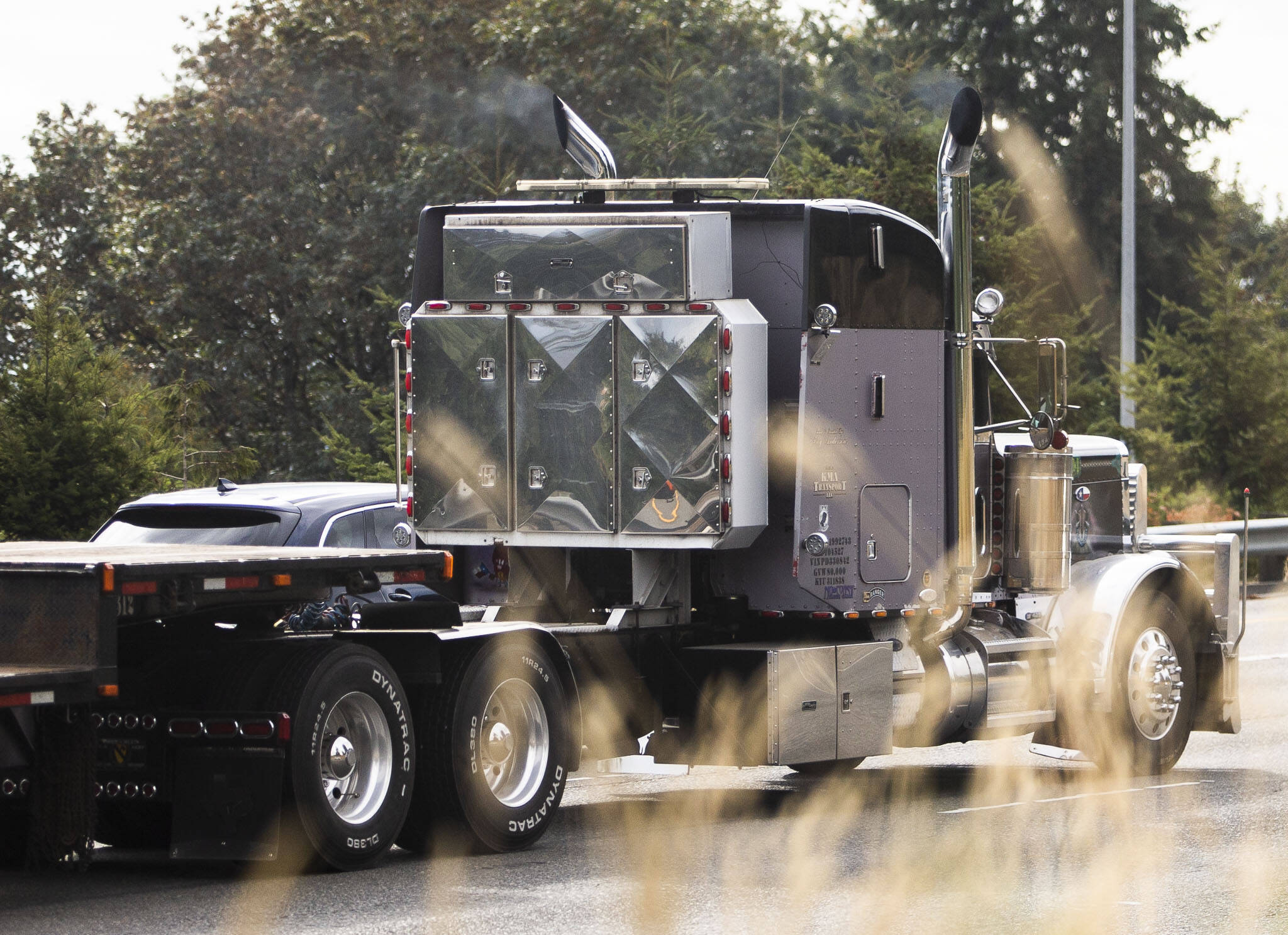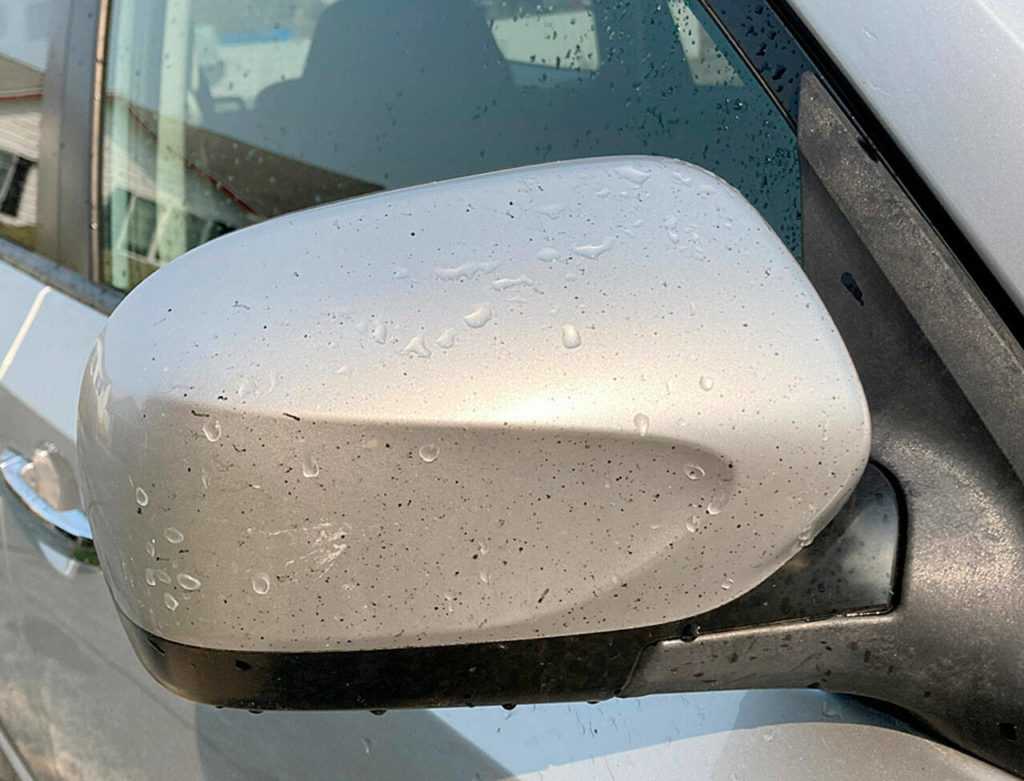With wildfire ash spreading across Western Washington, cars are a little dirty these days.
Even before the debris from charred flora blew this way, Fabian Borowiecki’s car needed a wash.
The Everett resident said he was driving home from Marysville and was behind a semi approaching the on-ramp to southbound Interstate 5. As it motored up to the freeway, it emitted the usual black smoke, Borowiecki said.
But when he got closer, he saw a “very fine spray of black something” coating his windshield. He used the windshield fluid and wiper, but that didn’t get rid of it.
“That was a mistake because the washer fluid and wipers just smeared those black dots over the whole windshield as if I was looking through wrinkled wax paper,” he wrote to The Daily Herald. “I kept hitting the washer button and after another couple seconds I was finally able to see out better.”
When he got home, he checked his car and found the small black residue across its front end. Borowiecki didn’t think it was road tar because it came off much easier than past experiences with it. But he wondered if it was diesel soot, and about the emission regulations for semis.
Diesel exhaust is considered the most harmful toxic air pollutant to people in the state, with nearly 5 million people exposed to high levels of it, according to the Washington State Department of Ecology. The largest sources of it in the state are heavy duty trucks (semis), ships, construction equipment, locomotives, farm equipment and buses.
The residue could be from leaking fluid rather than an emissions issue, Washington State Department of Ecology Air Quality Program spokesperson Susan Woodward wrote in an email.
The U.S. Environmental Protection Agency (EPA) regulates semis’ diesel emissions, which have declined since 1974, Woodward wrote. A large reduction in diesel particulate emission happened after new standards began for engines made after 1994 and 2007, as well as a requirement to burn ultra-low sulfur diesel, Woodward wrote.
At the same time, global carbon emissions from fossil fuels continue their steady increase, according to the EPA.
Washington adopted the same vehicle emission standards as California in 2020. California’s regulations practically mean all vehicles sold there must be electric, hydrogen-fueled or at least plug-in hybrid by 2035, as reported by CNN.
Other states might follow, according to the Associated Press.
Washington’s Department of Ecology is working to adopt California’s emission standards, which were aligned with the EPA until recently, Woodward wrote. But the Advanced Clean Truck Rule phases in a requirement for 40% of new semi-truck sales to be zero-emission vehicles by 2040.
“Washington is currently adopting more stringent emission standards on the path to cleaner vehicles,” Woodward wrote. “Ultimately, the new emission standard rules will apply to the manufacturers and distributors of heavy duty truck engines and vehicles.”
That could make for a cleaner future, but it won’t hurt to keep the washer fluid full.
Have a question? Call 425-339-3037 or email streetsmarts@heraldnet.com. Please include your first and last name and city of residence.
Talk to us
> Give us your news tips.
> Send us a letter to the editor.
> More Herald contact information.


























